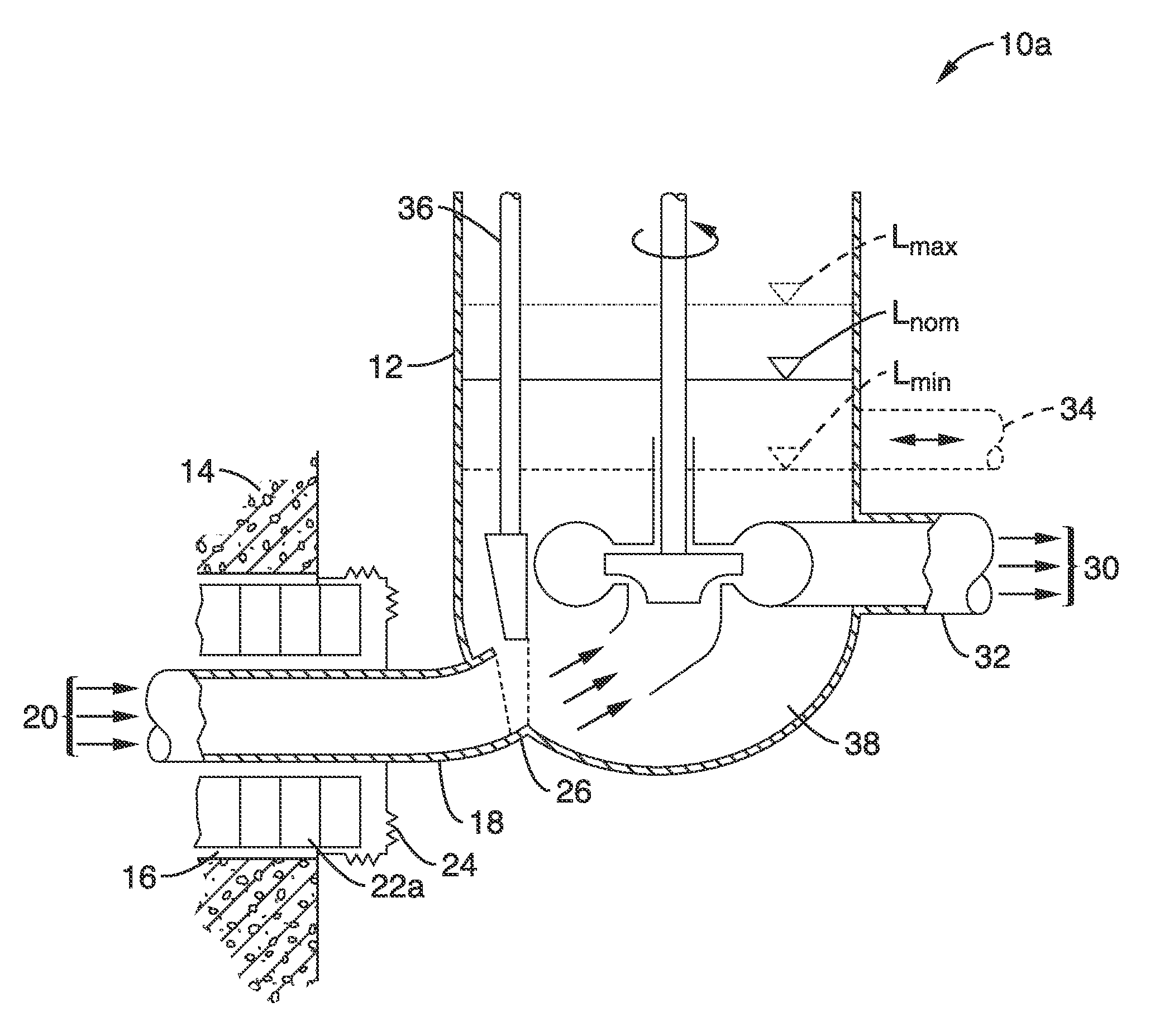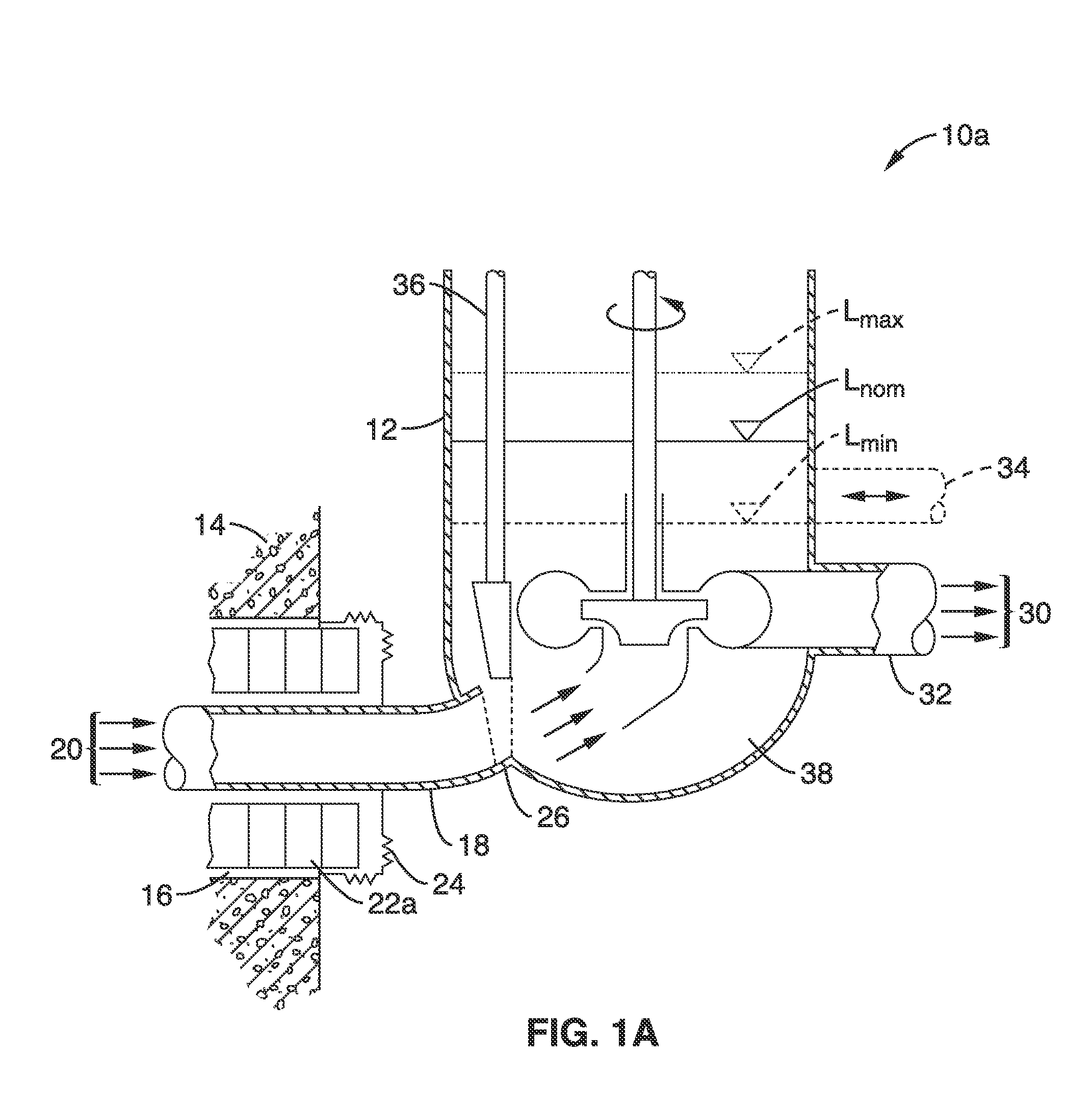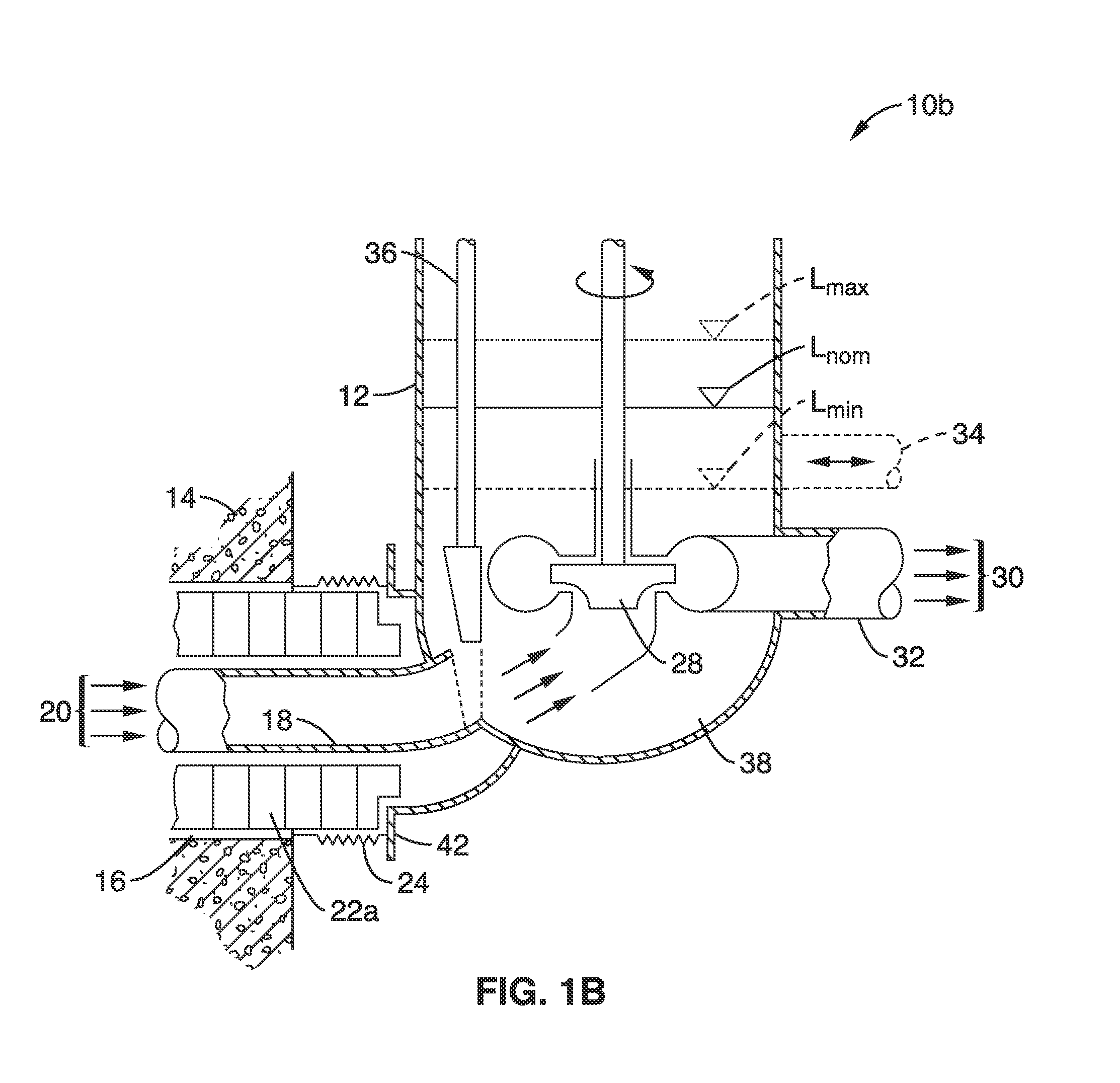Systems and methods for enhancing isolation of high-temperature reactor containments
a technology for containment and high-temperature reactors, which is applied in the direction of nuclear reactors, nuclear elements, greenhouse gas reduction, etc., can solve the problems of water hammer transmission, shock transmission into the reactor vessel and the containment structure, and excessive pressur
- Summary
- Abstract
- Description
- Claims
- Application Information
AI Technical Summary
Benefits of technology
Problems solved by technology
Method used
Image
Examples
Embodiment Construction
1. Isolation of High-Temperature Reactor Containments
[0042]One aspect of the present disclosure is a system to prevent a leak from a high-pressure process heat or power conversion heat exchanger from causing excessive pressurization or shock loading inside the reactor containment.
[0043]In a conventional configuration to transfer heat from a nuclear reactor containment to a process heat or power conversion heat exchanger outside of the containment using a low-volatility liquid, the hot liquid exits the reactor containment structure through one or more hot-leg penetrations. The coolant flows to the high-pressure heat exchanger, and then returns via one or more cold-leg penetrations back inside the reactor containment to be heated again. The pump that circulates the coolant may be in a variety of locations around the loop, either inside or outside containment.
[0044]In the systems 10A and 10B shown in FIG. 1A and FIG. 1B, the hot coolant 20 exits the containment through a hot-leg pipe 1...
PUM
 Login to View More
Login to View More Abstract
Description
Claims
Application Information
 Login to View More
Login to View More - R&D
- Intellectual Property
- Life Sciences
- Materials
- Tech Scout
- Unparalleled Data Quality
- Higher Quality Content
- 60% Fewer Hallucinations
Browse by: Latest US Patents, China's latest patents, Technical Efficacy Thesaurus, Application Domain, Technology Topic, Popular Technical Reports.
© 2025 PatSnap. All rights reserved.Legal|Privacy policy|Modern Slavery Act Transparency Statement|Sitemap|About US| Contact US: help@patsnap.com



